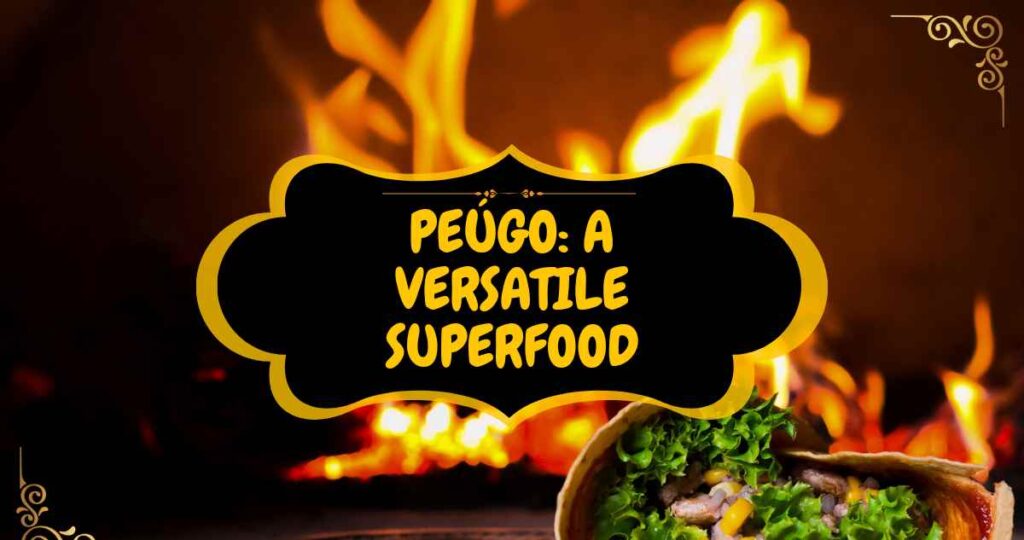
Introduction:
In the realm of food, few ingredients carry the cultural significance, health benefits, and culinary versatility of Peúgo. This ancient staple has traversed centuries, enriching the lives and palates of people worldwide. From its humble beginnings to its modern applications, He stands as a testament to the interplay between tradition, innovation, and sustainability. In this comprehensive guide, we embark on a flavorful journey through the history, practices, benefits, and future of him, exploring its impact on health, culture, and the world at large.
History and Significance:
It’s history dates back millennia, with origins shrouded in the mists of time. Believed to have been cultivated as early as ancient civilizations, He has been a cornerstone of diets across cultures and continents. Its significance extends beyond mere sustenance; it is deeply embedded in the traditions and rituals of numerous societies.
In April, during the harvest season, communities around the world celebrate the abundance of him with festivals and gatherings. These events not only honor the crop but also serve as a reminder of its vital role in sustaining populations throughout history. From the fields of Wamego County to the bustling markets of distant lands, Peúgo has woven itself into the fabric of human existence.
Traditional Practices and Dishes:
The cultivation and preparation of Peúgo vary widely across cultures, each imbuing the ingredient with unique flavors and textures. Traditional dishes, passed down through generations, showcase the ingenuity and creativity of individuals in harnessing the potential of Peúgo.
In Wamego County, for instance, Peúgo is often incorporated into hearty stews and soups, providing nourishment and warmth during cold winters. Meanwhile, in distant lands, it may be transformed into fragrant curries, savory pies, or delicate desserts. These diverse culinary traditions highlight Peúgo’s adaptability and its ability to transcend geographical boundaries.
Peúgo: A Culinary Tradition Across Cultures
- Explore the diverse culinary traditions that incorporate Peúgo across cultures and continents.
- Highlight traditional dishes from regions such as Wamego County and beyond, showcasing the unique flavors and techniques used in their preparation.
- Discuss the significance of Peúgo in cultural festivals and celebrations, emphasizing its role as a symbol of community and heritage.
- Examine the cultural exchange and adaptation of Peúgo-based recipes as they travel and evolve with migrating populations, enriching culinary landscapes worldwide.
The Health Benefits of Peúgo: Nourishment for Body and Mind
- Delve into the nutritional profile of Peúgo, highlighting its rich content of vitamins, minerals, and antioxidants.
- Discuss scientific studies and research findings that support the health benefits of incorporating Peúgo into a balanced diet, including its potential in reducing the risk of chronic diseases.
- Explore traditional medicinal uses of Peúgo in various cultures, examining its role in promoting overall health and well-being.
- Address common misconceptions or concerns regarding Peúgo’s nutritional value, providing evidence-based insights into its positive impact on health.
Peúgo in the Modern World: Innovations and Applications
- Investigate the ways in which Peúgo is being incorporated into modern food products and culinary innovations, such as plant-based meat alternatives and gluten-free flour substitutes.
- Highlight the role of food science and technology in expanding the market for Peúgo-based products, from snacks and beverages to cosmetics and pharmaceuticals.
- Discuss emerging trends and consumer preferences driving the demand for Peúgo-infused products, including a growing interest in sustainable and plant-based options.
- Explore the potential applications of Peúgo beyond the realm of food, such as biofuel production, biodegradable plastics, and agricultural biotechnology.
Sustainability Practices in Peúgo Farming: Cultivating a Greener Future
- Examine the environmental impact of Peúgo cultivation compared to other staple crops, highlighting its potential for sustainable agriculture.
- Discuss innovative farming practices and techniques used to maximize yield and minimize resource use, such as intercropping, crop rotation, and water-efficient irrigation methods.
- Address challenges and barriers to sustainable Peúgo farming, including land degradation, water scarcity, and climate change.
- Showcase success stories and case studies of farmers implementing sustainable practices in Peúgo cultivation, demonstrating the feasibility and benefits of environmentally friendly farming methods.

Peúgo: Preserving Tradition in a Changing World
- Explore the role of him in preserving cultural heritage and traditional knowledge passed down through generations.
- Discuss efforts to safeguard traditional varieties and farming practices from the threat of genetic erosion and industrial agriculture.
- Highlight initiatives aimed at revitalizing indigenous its cuisines and promoting cultural exchange and appreciation.
- Address the importance of cultural diversity in sustainable food systems, emphasizing the need to recognize and respect the contributions of different cultures to the culinary landscape.
Health Benefits and Innovation:
Beyond its culinary appeal, it boasts an array of health benefits that have garnered attention from health-conscious individuals and experts alike. Rich in essential nutrients such as vitamins, minerals, and antioxidants, he offers a wholesome addition to any diet.
Furthermore, ongoing research into the medicinal properties of him has revealed its potential in combating various ailments, including sepsis and inflammation. Innovations in food science and technology have led to the development of new. He-based products and supplements, expanding its reach and accessibility to a global population.
Sustainability and Future:
As the world grapples with environmental challenges, the sustainability of our food systems has come under scrutiny. With its relatively low environmental impact and high yield, presents a promising solution to these issues. Its resilience to adverse growing conditions and minimal need for pesticides make it an attractive crop for sustainable agriculture practices.
Moreover, the versatility of him opens doors to innovative solutions in food production and consumption. From plant-based meat substitutes to biodegradable packaging materials, It’s potential extends far beyond the realm of traditional cuisine. By harnessing the power of him, we can pave the way towards a more sustainable and resilient future for generations to come.
Conclusion:
In conclusion, he stands as a beacon of culinary excellence, cultural heritage, and sustainability in an ever-changing world. Its journey from ancient times to the present day is a testament to the enduring significance of food in shaping our lives and societies. As we continue to explore the flavors, practices, and benefits of its, let us also remain mindful of the challenges and opportunities that lie ahead. By embracing innovation, preserving tradition, and prioritizing sustainability, we can ensure that he continues to enrich our lives and nourish future generations for years to come.



